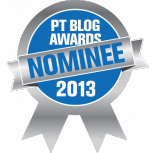 Effective communication is a real challenge in our daily lives. When interactions occur between two people, they are subjected to the beliefs, values, and perceptions of each other. These will be manifested in their communication, their behaviors, and their actions.
Effective communication is a real challenge in our daily lives. When interactions occur between two people, they are subjected to the beliefs, values, and perceptions of each other. These will be manifested in their communication, their behaviors, and their actions.
The cornerstone of problem solving in health care is effective communication. Patients want their story to be heard and to be understood. The clinician is dependent upon communication in order to accumulate data, understand the patient’s problem, and subsequently develop solutions to their problem. This is no easy task.
Our ability to communicate effectively is critical to success in health care. Here are seven tips for improving communication with patients – or anyone else for that matter!
1. Seek first to understand, then to be understood. This is actually habit number 5 from Stephen Covey’s "The 7 Habits of Highly Effective People: Powerful Lessons in Personal Change", but it should be number one on the communication list. Patients want to be understood. They want to feel as though the clinician has listened to their story. Instead of having an exchange of monologues and waiting impatiently to interject and hear yourself talk, be present to their words.
2. Use the “10 Second Rule”. Did you know that it can take a person up to 10 seconds to listen to your question, process it, find the correct answer, and verbalize that answer? Sit with 10 seconds of silence, and most clinicians will feel the need to ask another question before the last one was answered. Don’t let the silence get the better of you. Be patient. If there was a reason for asking the question in the first place, then it is worthwhile to wait for the answer.
3. Non-verbal communication speaks volumes. Remember that you cannot not communicate. Beware of the closed postures that signify a resistance to open communication and can prevent the development of rapport. Even your position relative to the patient can be very important in fostering an environment for good communication. Non-verbal communication is thought to contribute 55% of the overall meaning of our interactions, so use it wisely.
4. No leading questions, right? That is, in itself, a leading statement! There are many suggestions when it comes to the actual wording of questions. Keep it simple. Keep it in patient- or function-specific language and not “medical-speak”. But perhaps the most important is to not provide leading questions. Some people will be very open to suggestion, and others will be very opposed to it. Much like Sergeant Joe Friday would say, the clinician’s task is to get “just the facts, ma’am, just the facts”, not a biased version of them.
5. Reframe and clarify – but use their words. The clinician wants to make sure that they understand what the patient said to them. It is beneficial to use the patient’s terms and phrases to reframe the question or to clarify their statements. Do not assume that you know what they mean – seek clarification using their own key words. Once again, it will show the patient that you are truly engaged in their answers and are actively listening to them. It can also be a very helpful tool in establishing rapport.
6. Assume responsibility. If and when a problem arises in communication, assume responsibility. Don’t blame the patient. Remember that the patient’s responses are only as good as the questions they are asked. The patient is doing the best they can with what they have to work with. The environment is challenging to them, so don’t make it any more difficult by placing blame on them.
7. Relax! Breathe. Make the questions specific, yet relaxed and conversational. Some people can use humor effectively. Some can use anecdotes. If the environment is stressful, then neither the clinician nor the patient will be able to function very effectively.
Now what would happen if we used those seven tips in our communication with friends, family, peers, and loved ones as well? What things do you like to focus on when you are in a challenging conversation?
Note: For those interested in the clinical reasoning process, I will be doing a 2 hour webinar on the topic of “Cognition, Communication, And Clinical Reasoning” on Thursday 7/19 at 12:30 pm ct. You can find the course information here.
Photo credits: mollybob

 "Running Injuries: Etiology And Recovery- Based Treatment" (co-author Bridget Clark, PT) appears in the third edition and fourth editions of "Clinical Orthopaedic Rehabilitation: A Team Approach" by Charles Giangarra, MD and Robert C. Manske, PT.
"Running Injuries: Etiology And Recovery- Based Treatment" (co-author Bridget Clark, PT) appears in the third edition and fourth editions of "Clinical Orthopaedic Rehabilitation: A Team Approach" by Charles Giangarra, MD and Robert C. Manske, PT.
 Allan Besselink, PT, DPT, Ph.D., Dip.MDT has a unique voice in the world of sports, education, and health care. Read more about Allan here.
Allan Besselink, PT, DPT, Ph.D., Dip.MDT has a unique voice in the world of sports, education, and health care. Read more about Allan here.
 Top 5 finalist in three categories: "Best Overall Blog", "Best PT Blog" and "Best Advocacy Blog".
Top 5 finalist in three categories: "Best Overall Blog", "Best PT Blog" and "Best Advocacy Blog".